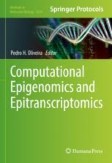Search
Search Results
-
Map** of RNA Modifications by Direct Nanopore Sequencing and JACUSA2
RNA modifications exist in all kingdom of life. Several different types of base or ribose modifications are now summarized under the term...
-
Integrating Single-Cell Methylome and Transcriptome Data with MAPLE
As a mechanism of epigenetic gene regulation, DNA methylation has crucial roles in developmental and differentiation programs. Thanks to the recently...
-
Sequoia: A Framework for Visual Analysis of RNA Modifications from Direct RNA Sequencing Data
Oxford Nanopore-based long-read direct RNA sequencing protocols are being increasingly used to study the dynamics of RNA metabolic processes due to...
-
DNA Modification Patterns Filtering and Analysis Using DNAModAnnot
Map** DNA modifications at the base resolution is now possible at the genome level thanks to advances in sequencing technologies. Long-read...
-
A Retrospective Analysis to Investigate Contact Sensitization in Greek Population Using Classic and Machine Learning Techniques
Allergic contact dermatitis (ACD) is an inflammatory reaction affecting all age groups and both sexes. ACD is characterized by a delayed-type...
-
Integrating Wearable Sensors and Machine Learning for the Detection of Critical Events in Industry Workers
The event where an industry worker experiences some sort of critical health problems on site, due to factors not strictly related to the job, poses a...
-
Spiking Neural Networks and Mathematical Models
Neural networks are applied in various scientific fields such as medicine, engineering, pharmacology, etc. Investigating operations of neural...
-
On Modelling Electrical Conductivity of the Cerebral White Matter
The conductivity, in general, of the brain tissues is a characteristic key of functional cerebral changes. White matter electric conductivity appears...
-
Computational Methods for Anticancer Drug Discovery; The MCT4 Paradigm
Modern anticancer research has employed advanced computational techniques and artificial intelligence methods for drug discovery and development,...
-
Computational Methods for Protein Tertiary Structure Analysis
Protein folding accuracy is fundamental to all cells. In spite of this, it is difficult to maintain the fidelity of protein synthesis and folding due...
-
Mathematical Study of the Perturbation of Magnetic Fields Caused by Erythrocytes
The purpose of this chapter is the mathematical study of the perturbation of a homogeneous static magnetic field caused by the embedding of a red...
-
A Sensor-Based Platform for Early-Stage Parkinson’s Disease Monitoring
Biosensing platforms have gained much attention in clinical practice screening thousands of samples simultaneously for the accurate detection of...
-
Biological Networks
In several areas of biology, networks are frequently employed to conveniently describe interactions between relevant biological components....
-
AI in Longevity
Deep learningDeep Learning models are powerful digital tools that can analyze all kinds of biodata and provide insights that cannot be obtained with...
-
An Overview of Kernel Methods for Identifying Genetic Association with Health-Related Traits
In recent years, with technological developments, the amount of information available has grown very rapidly, which has led to a greater variety in...
-
Prediction of Intracranial Temperature Through Invasive and Noninvasive Measurements on Patients with Severe Traumatic Brain Injury
The brain’s temperature measurements (TB) in patients with severe brain damage are important, in order to offer the optimal treatment. The purpose of...
-
Using Biomarkers for Cognitive Enhancement and Evaluation in Mobile Applications
Clinicians are increasingly using biomarkers to diagnose and monitor cognitive conditions such as mild cognitive impairment, Alzheimer’s disease, and...
-
Exponential Growth and Decay
Many physical phenomena are governed by an (approximate) exponential growth or exponential decay, and clearly biological phenomena are not an...
-
Competition Models with Logistic Term
Recall from the competition model in Chap. 8 that the form used for the model led to one population declining to...
-
Chaotic Systems
We have described the discrete logistic population model in Chap. 3 . Here we will offer a slightly modified...
